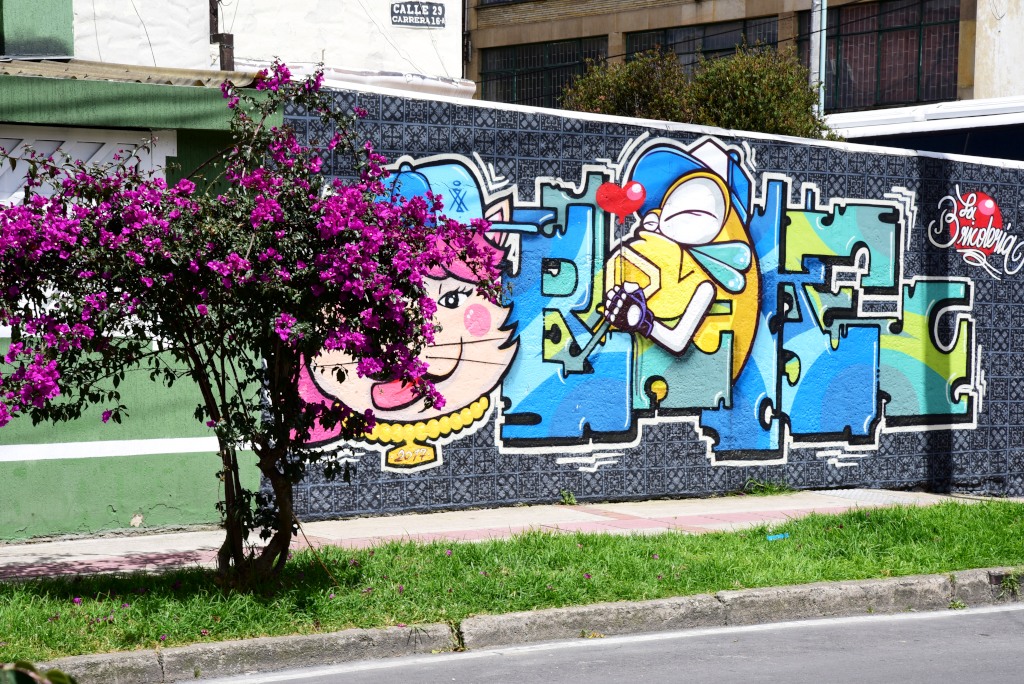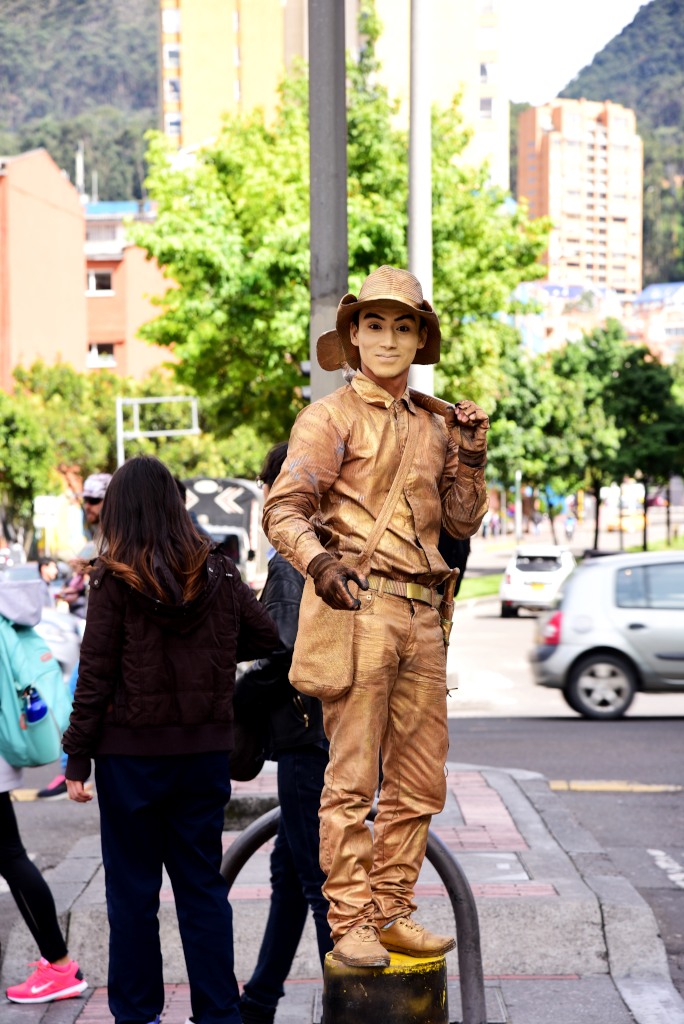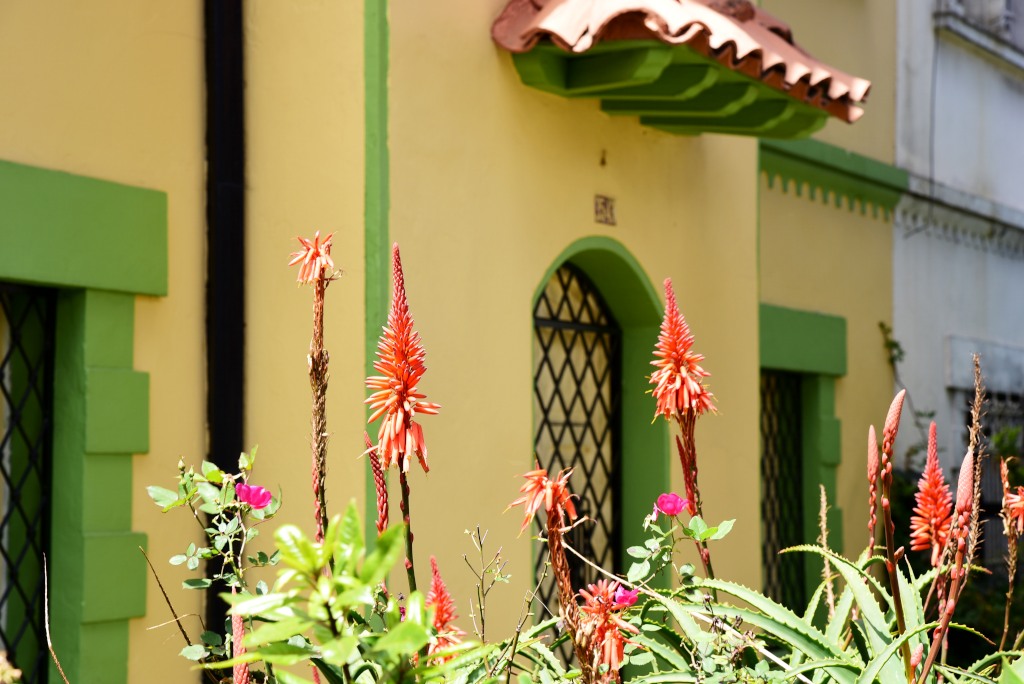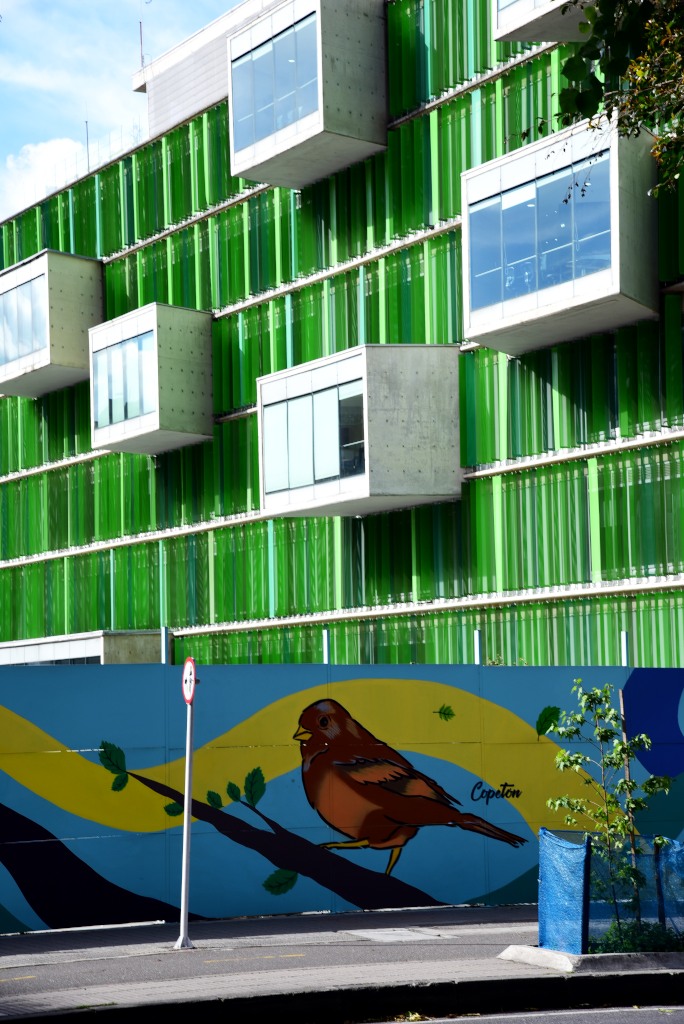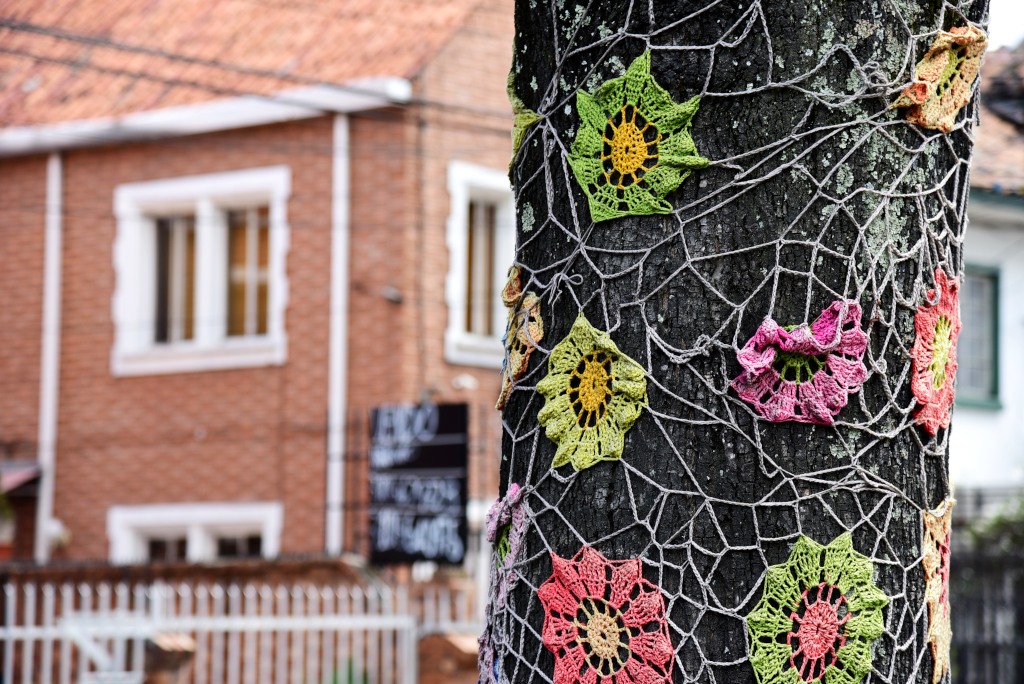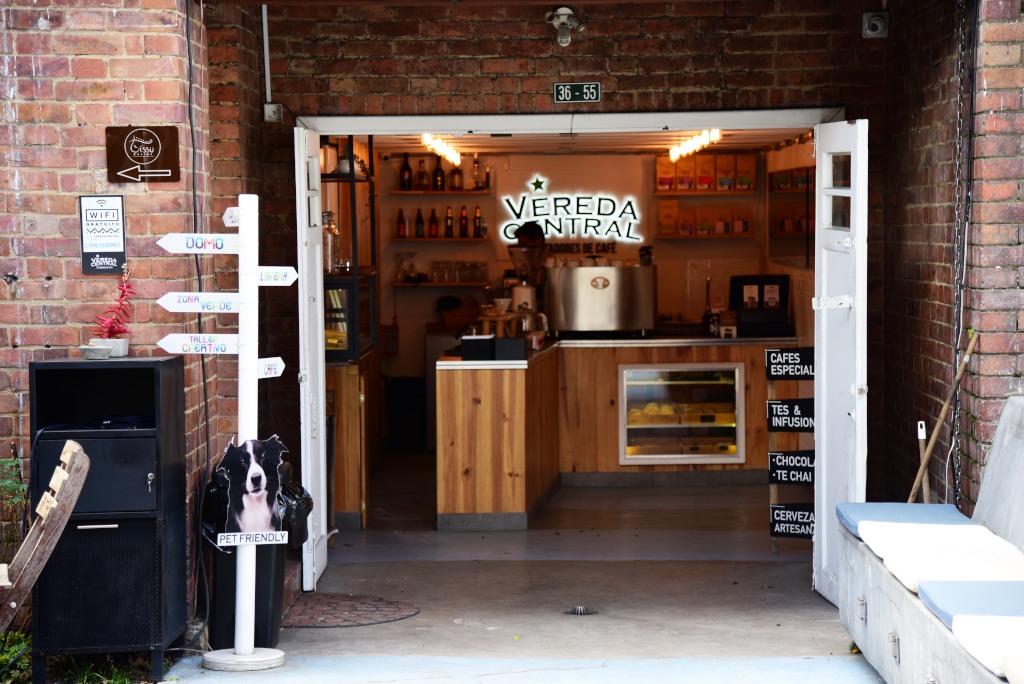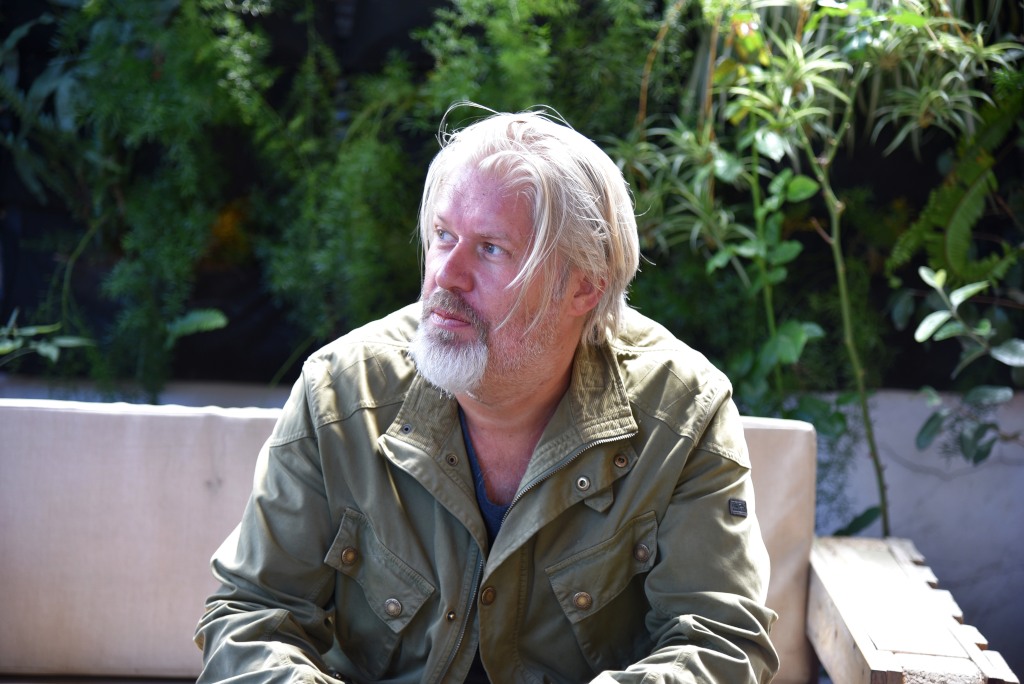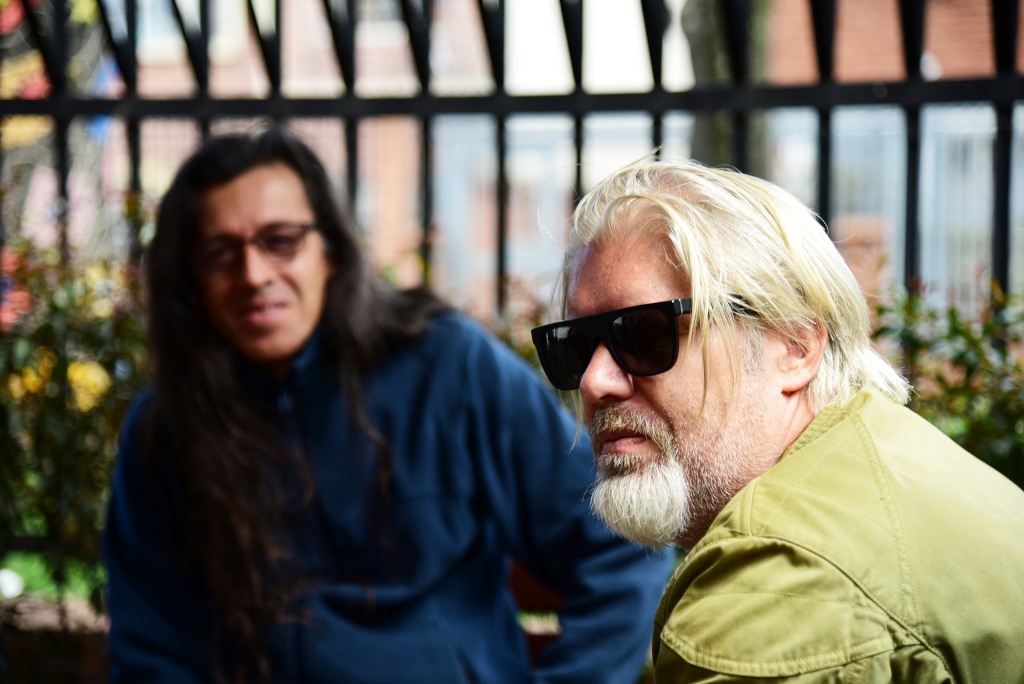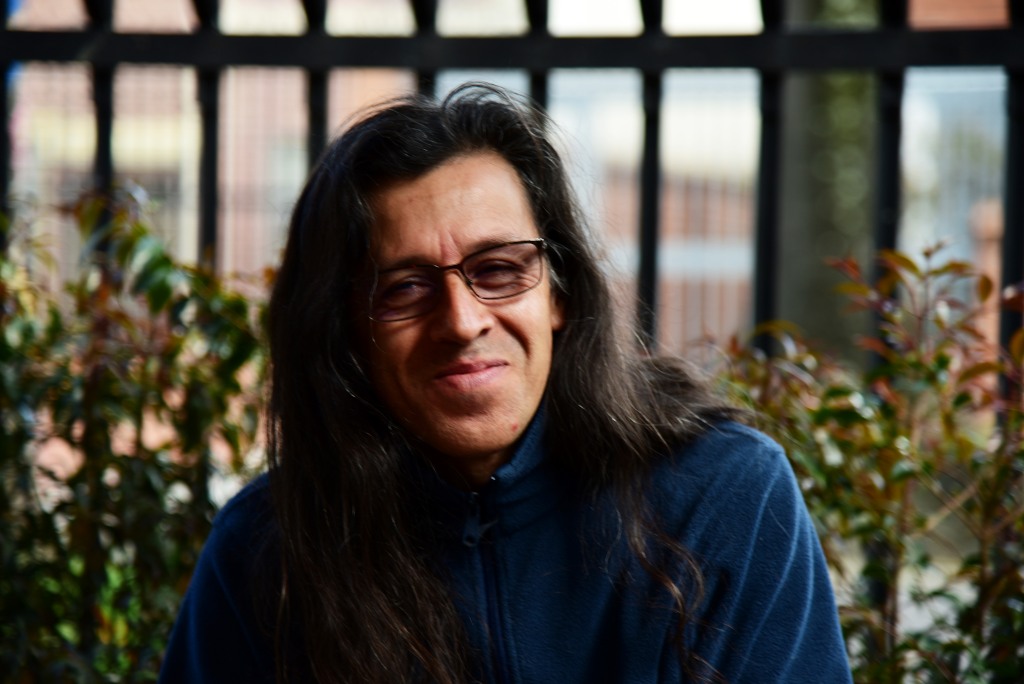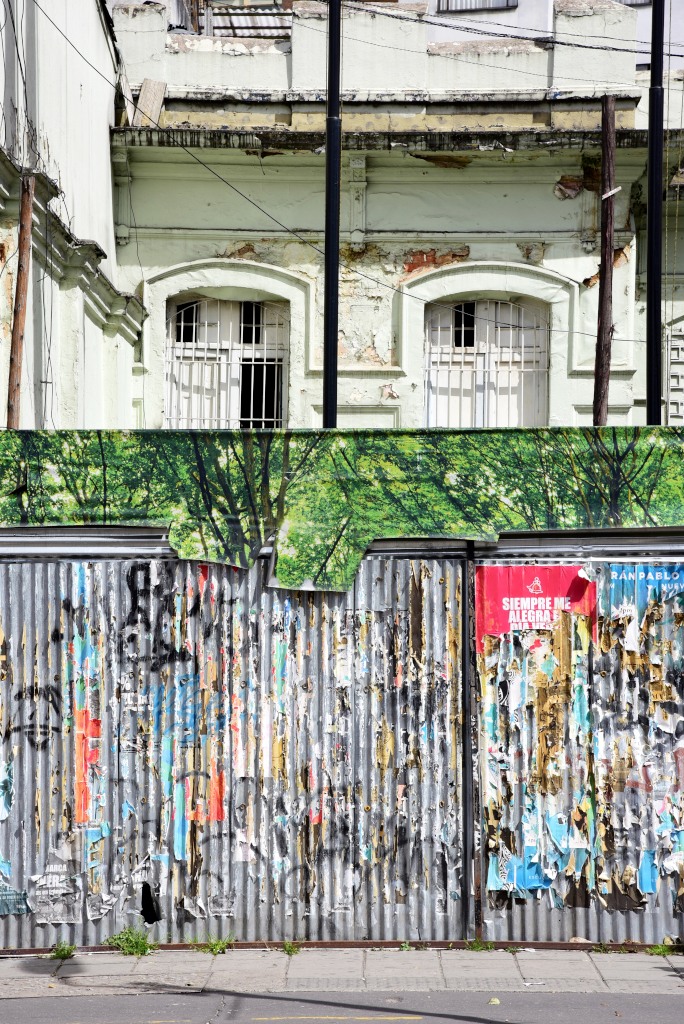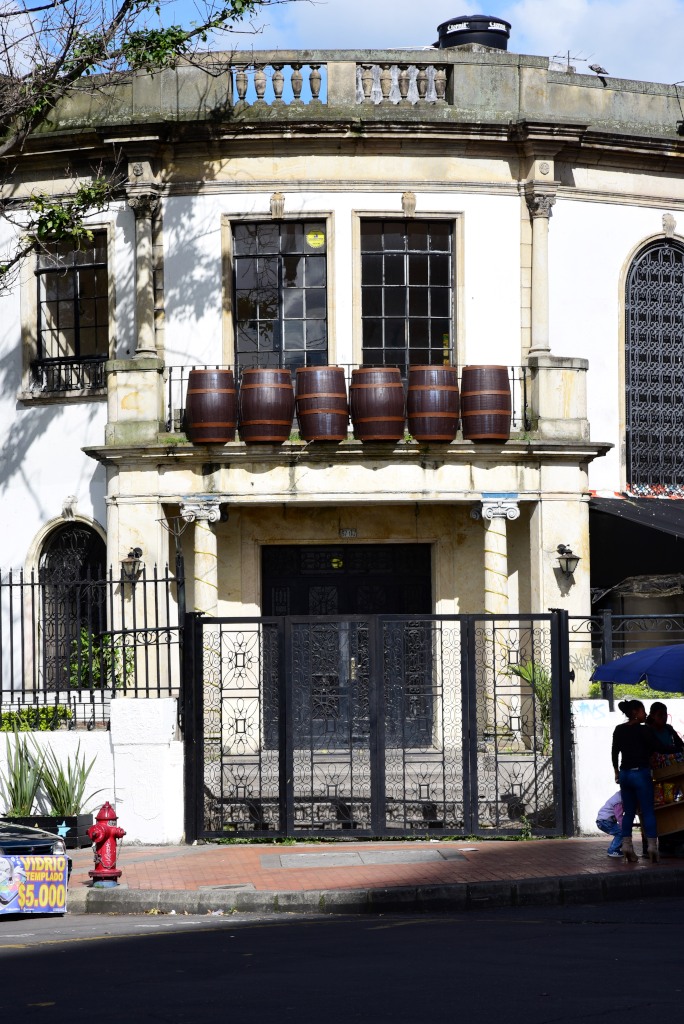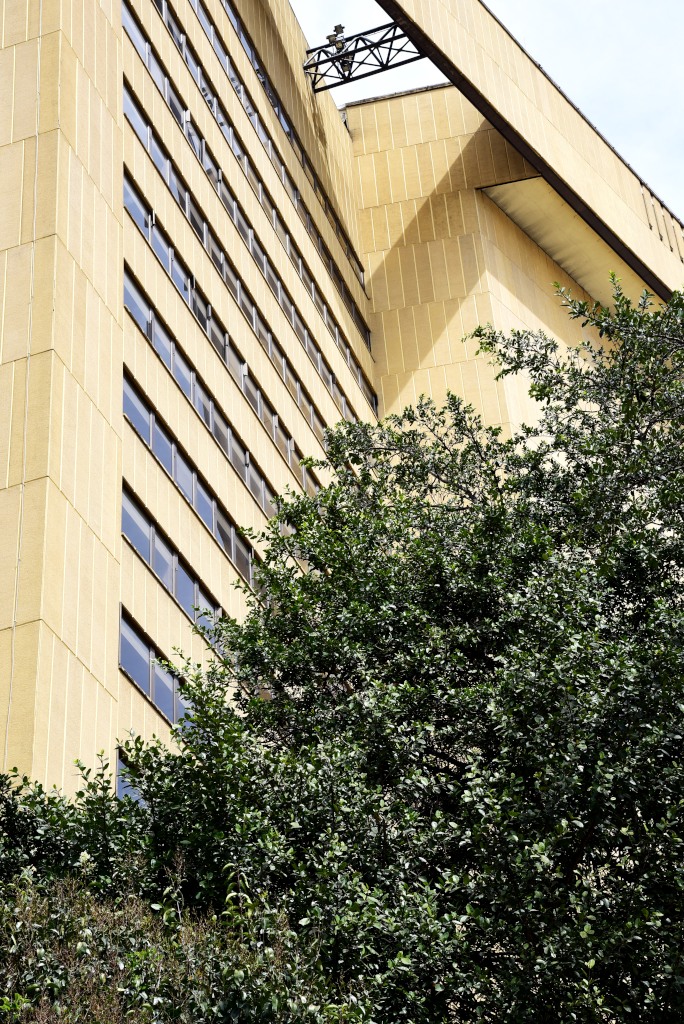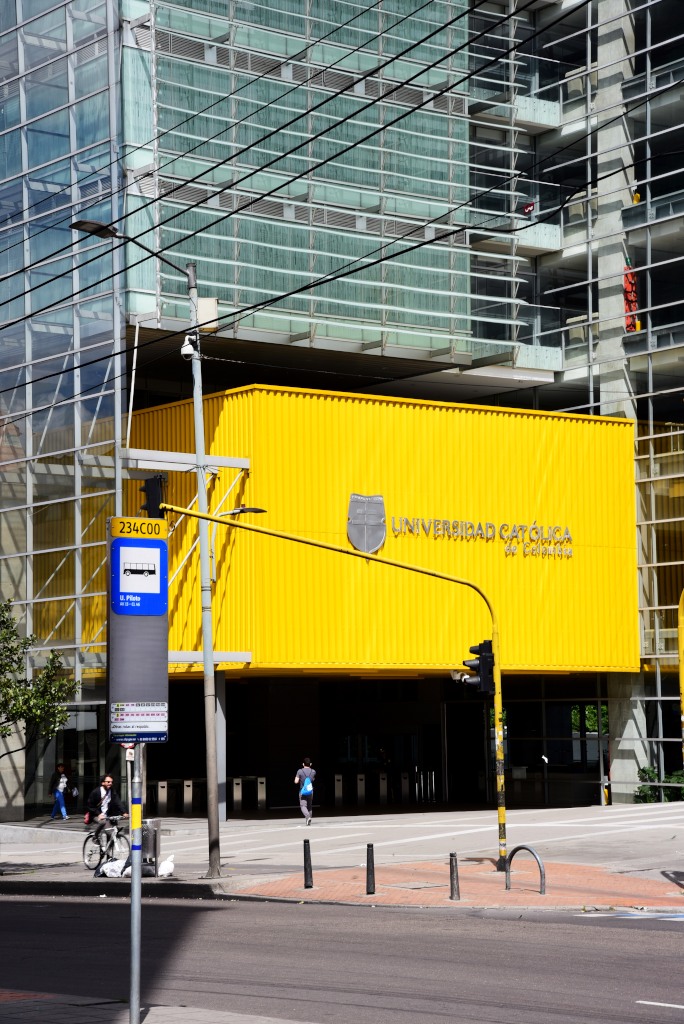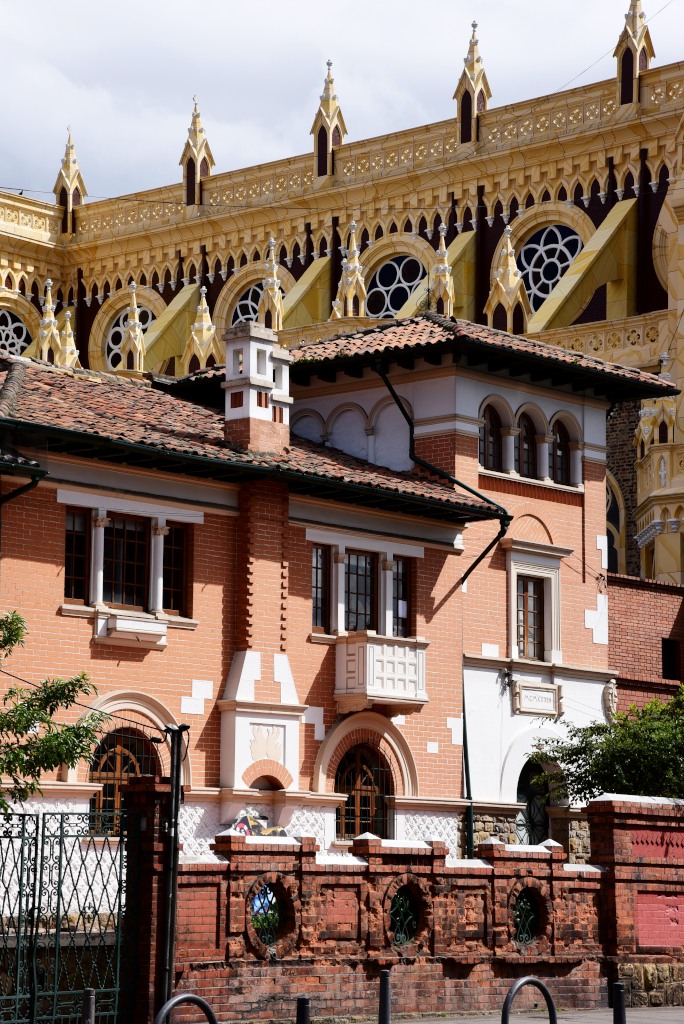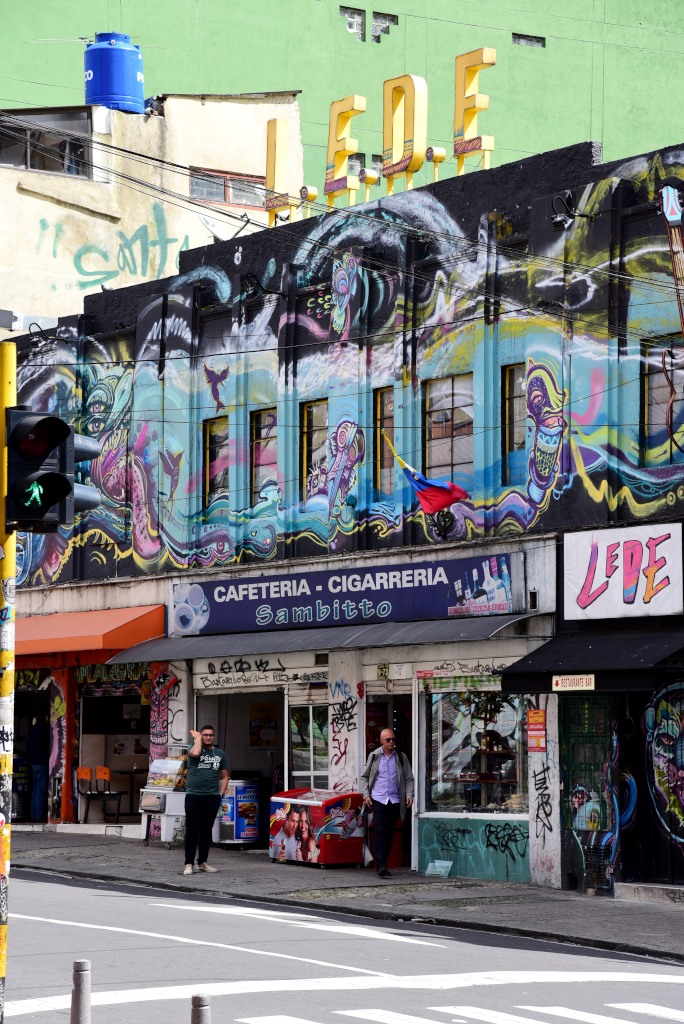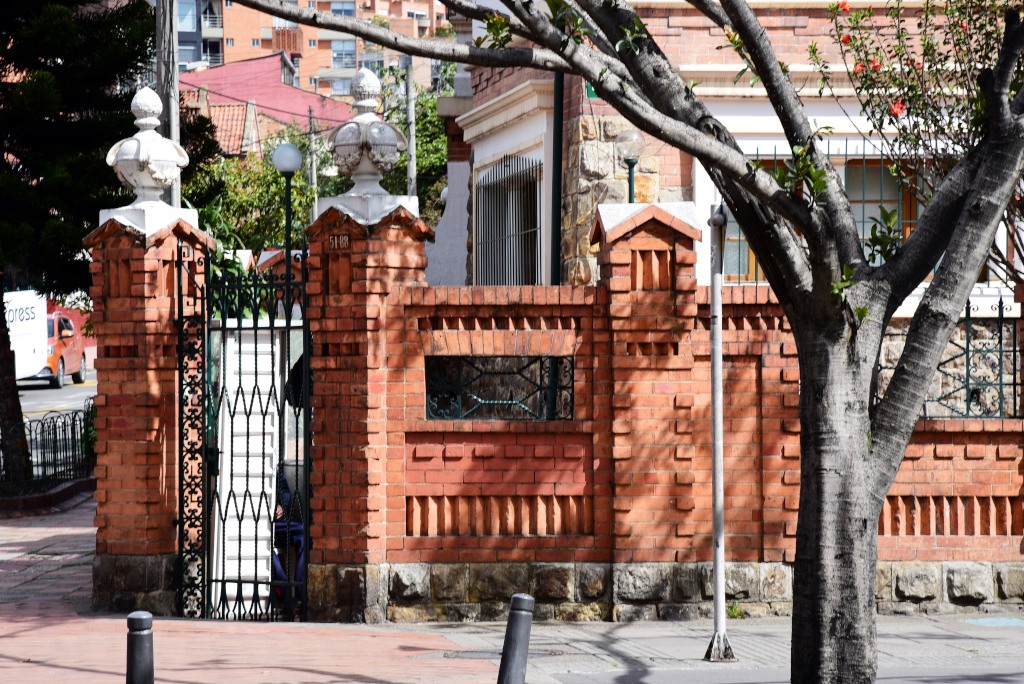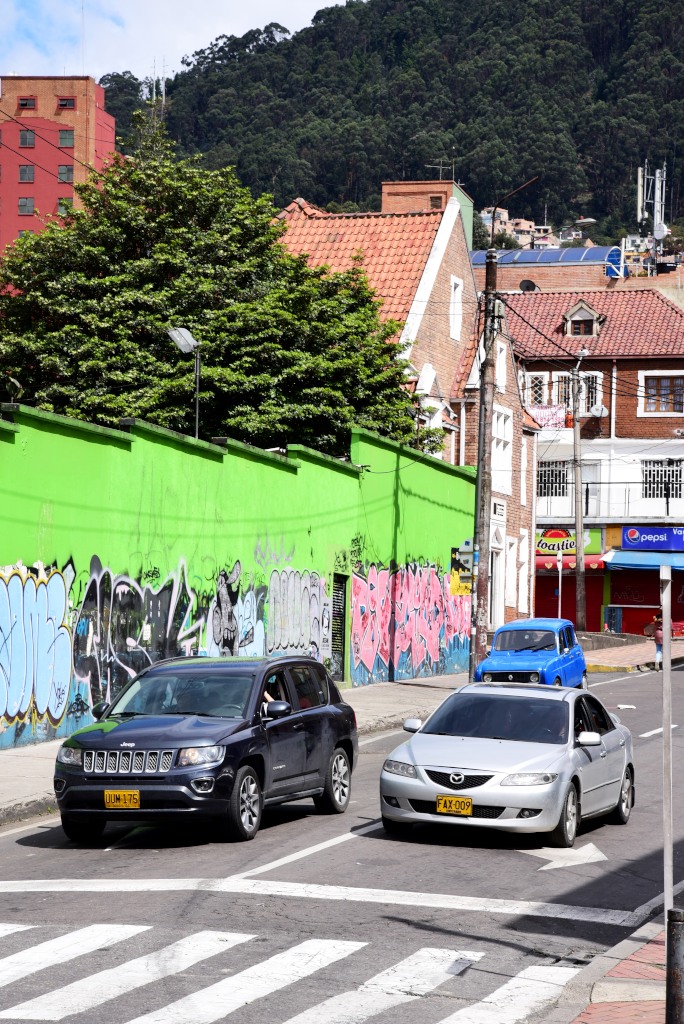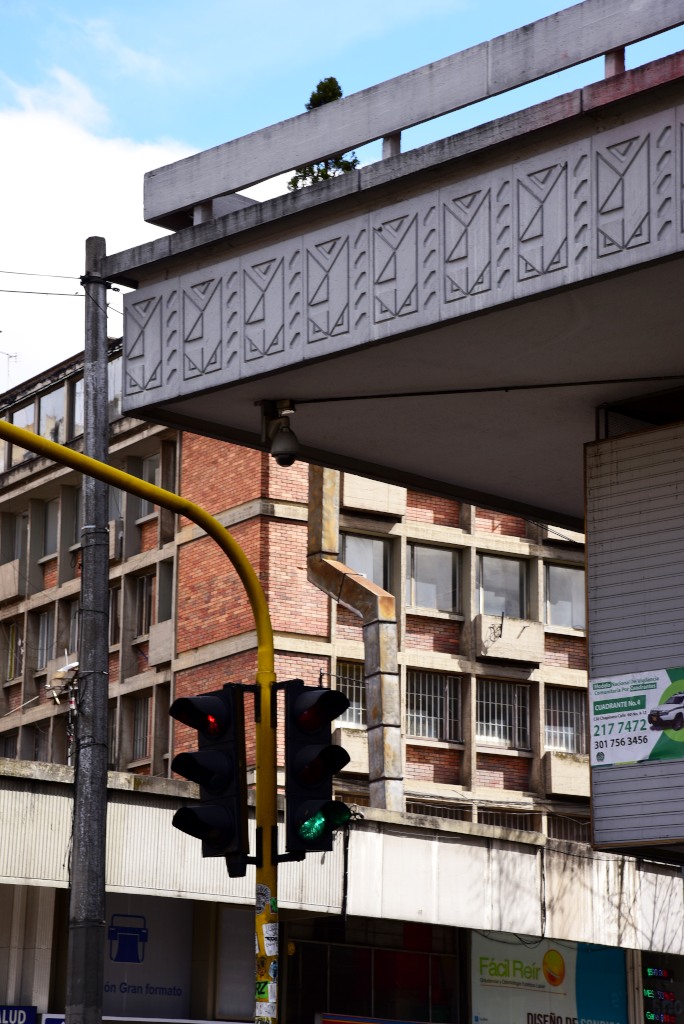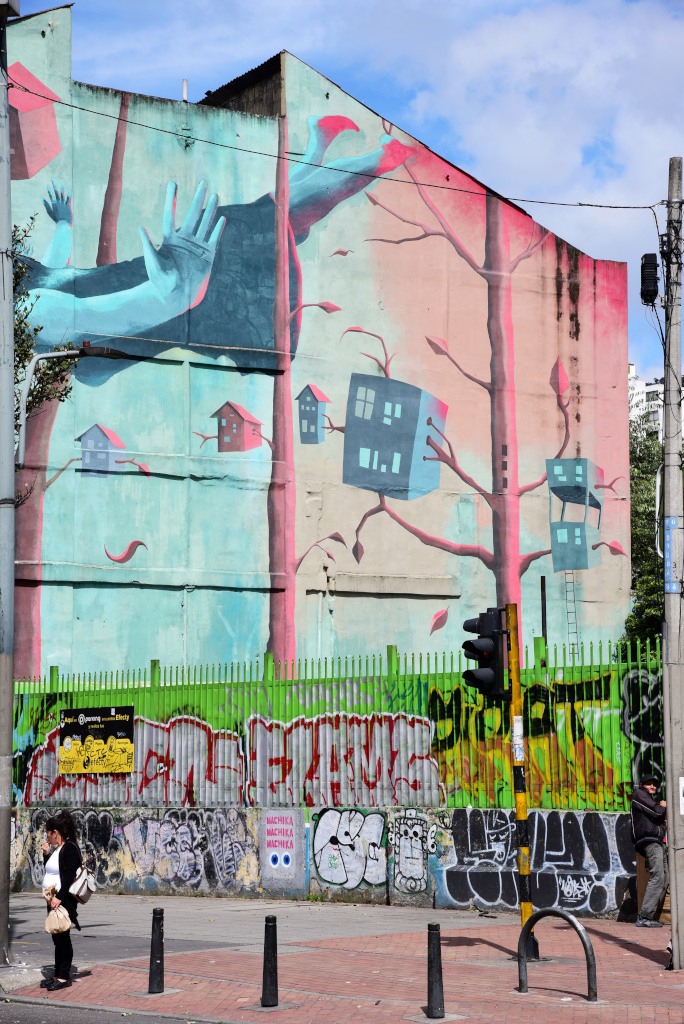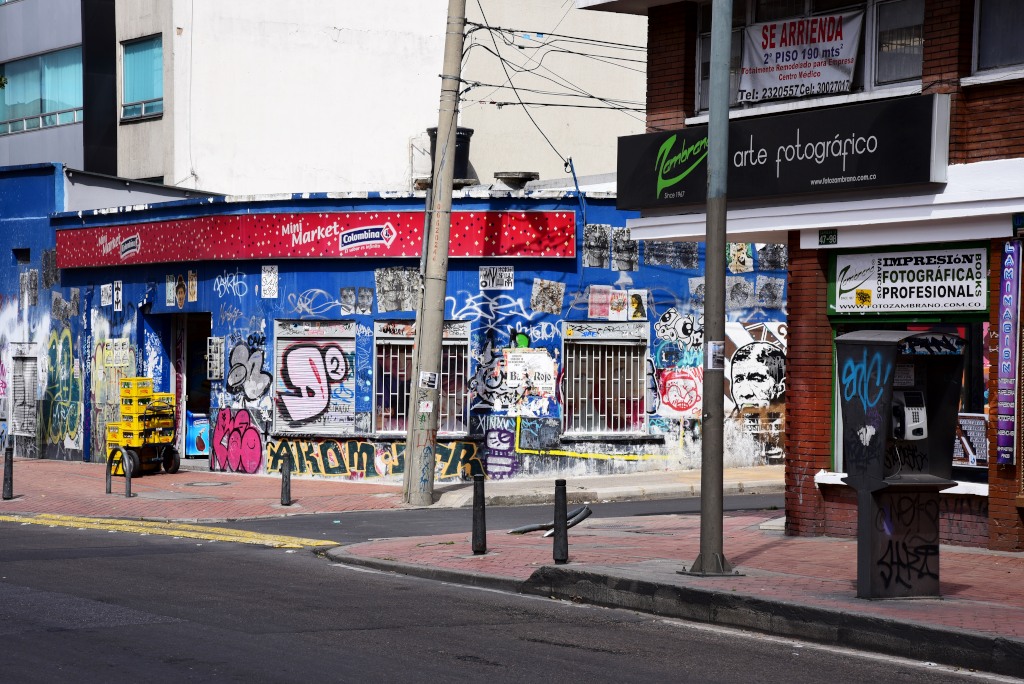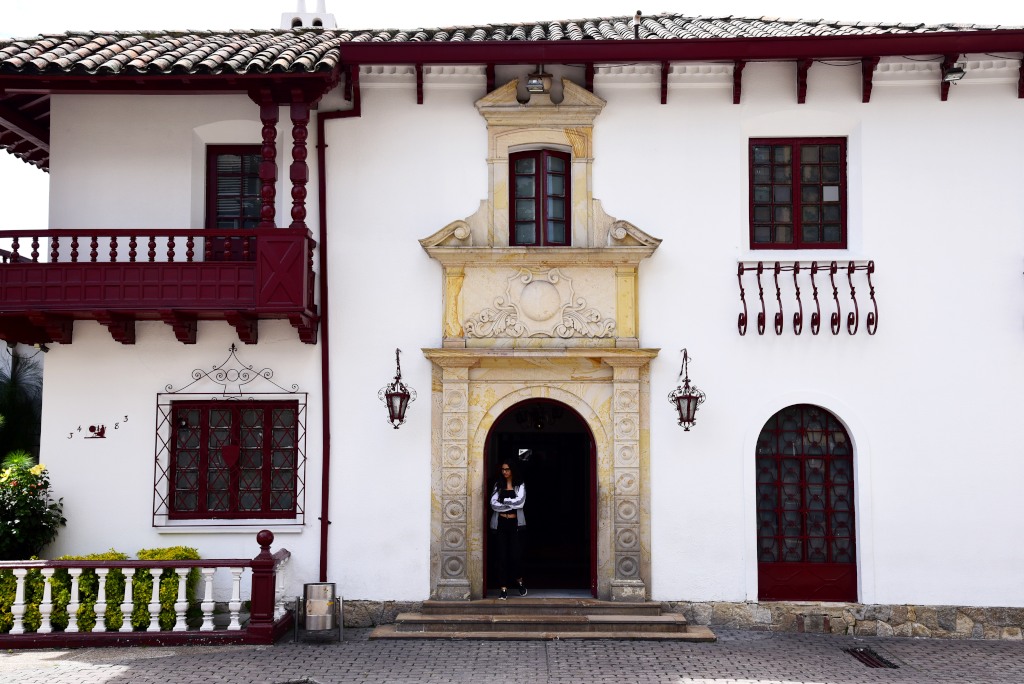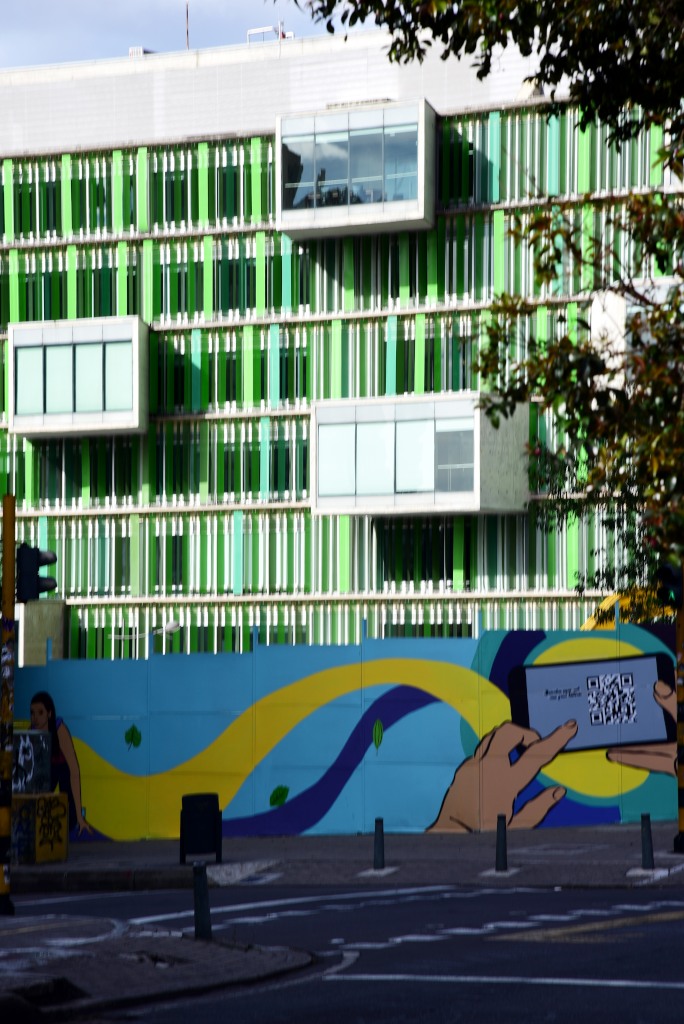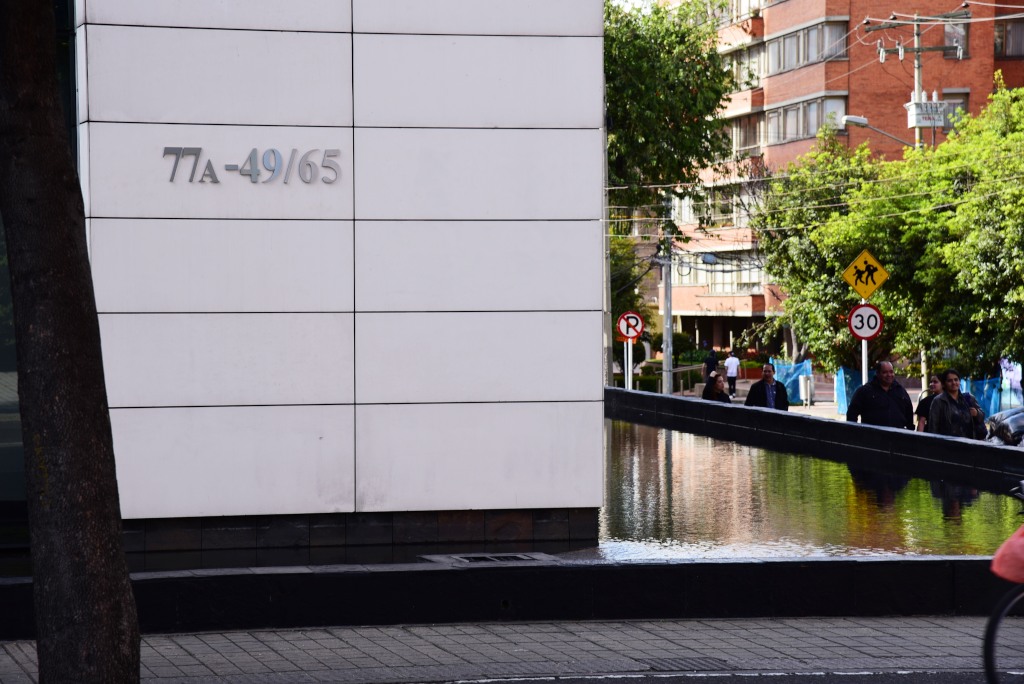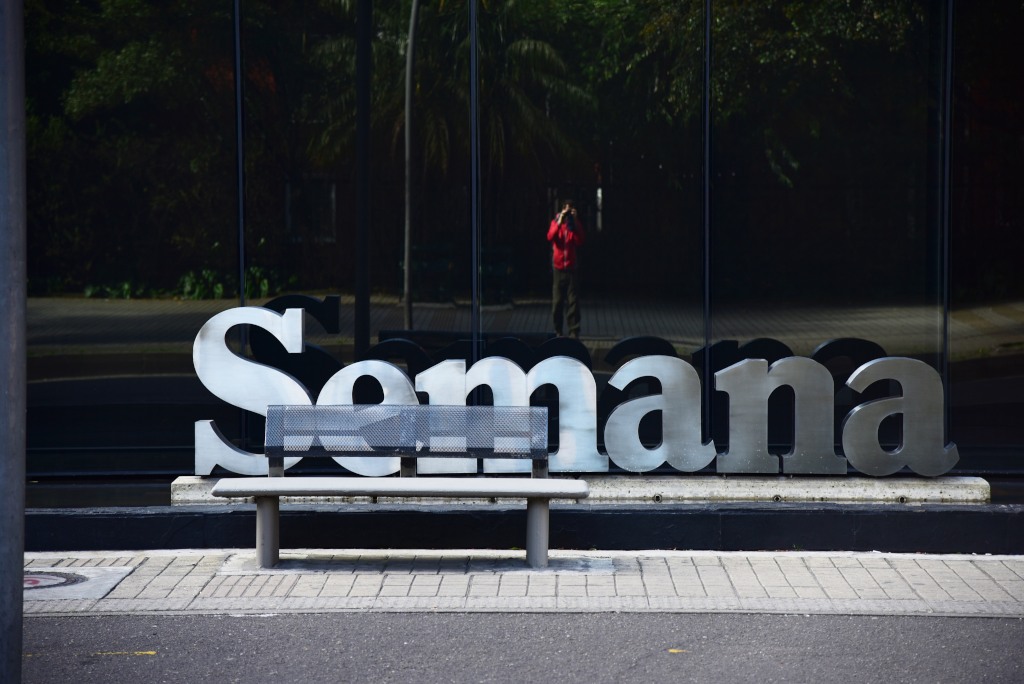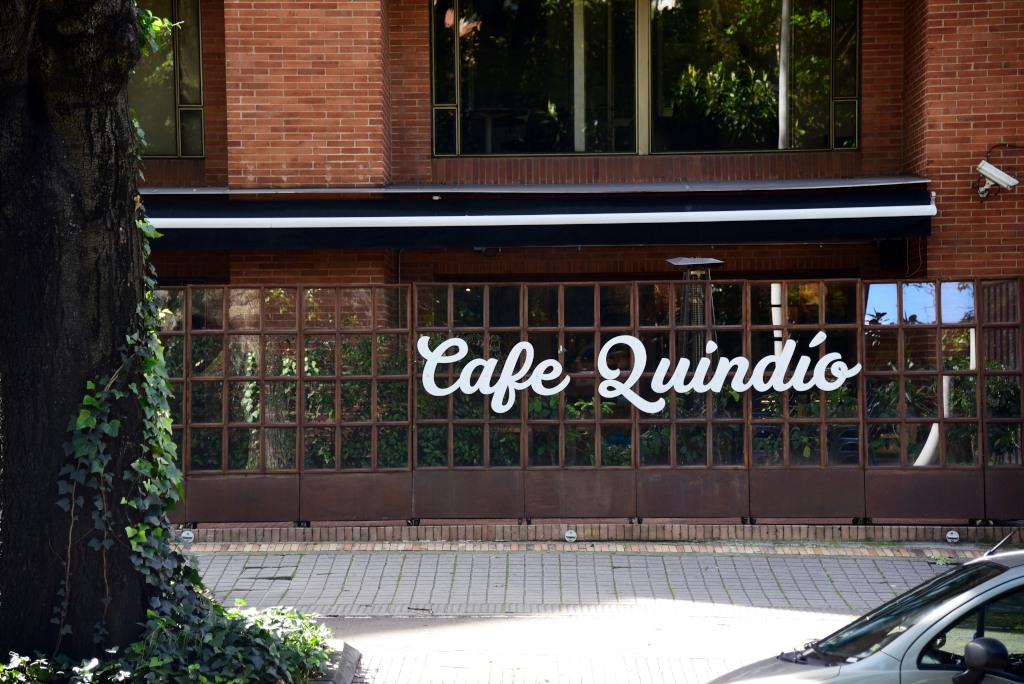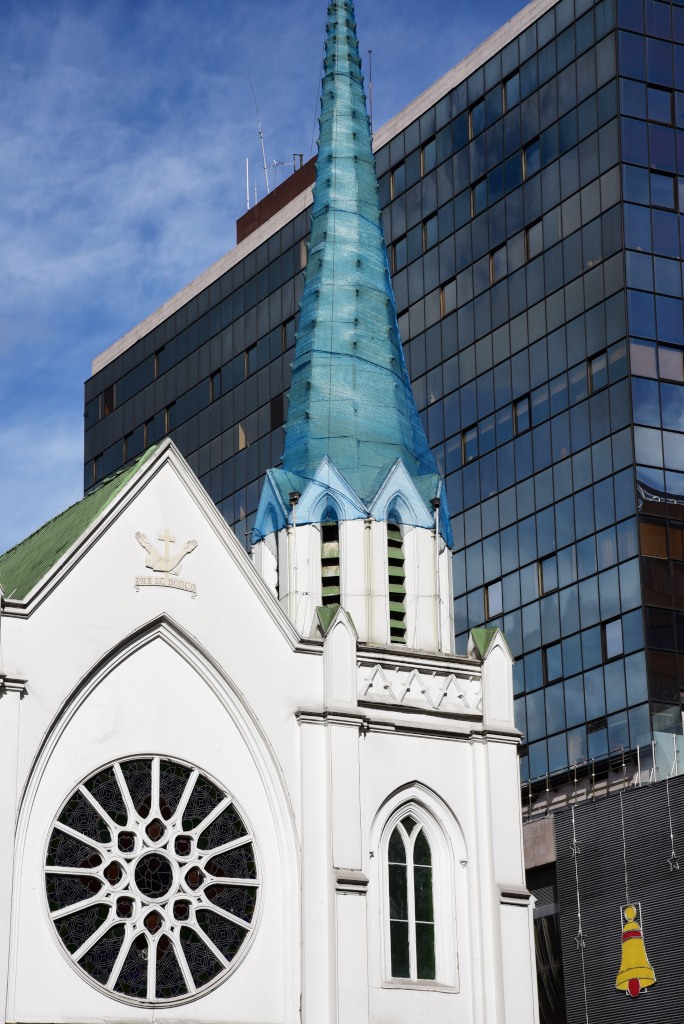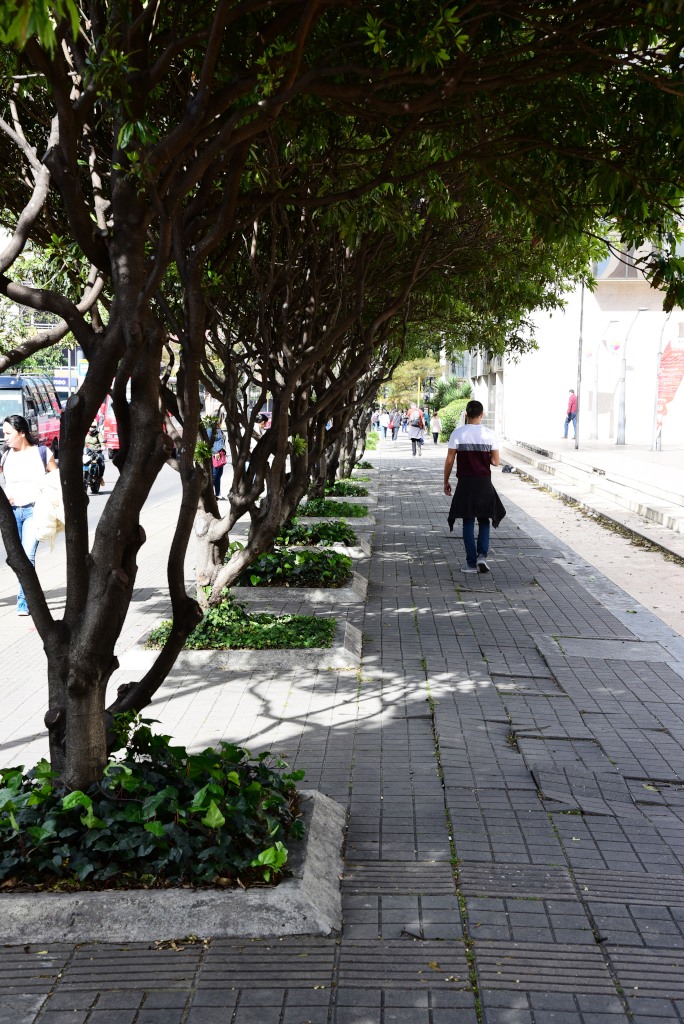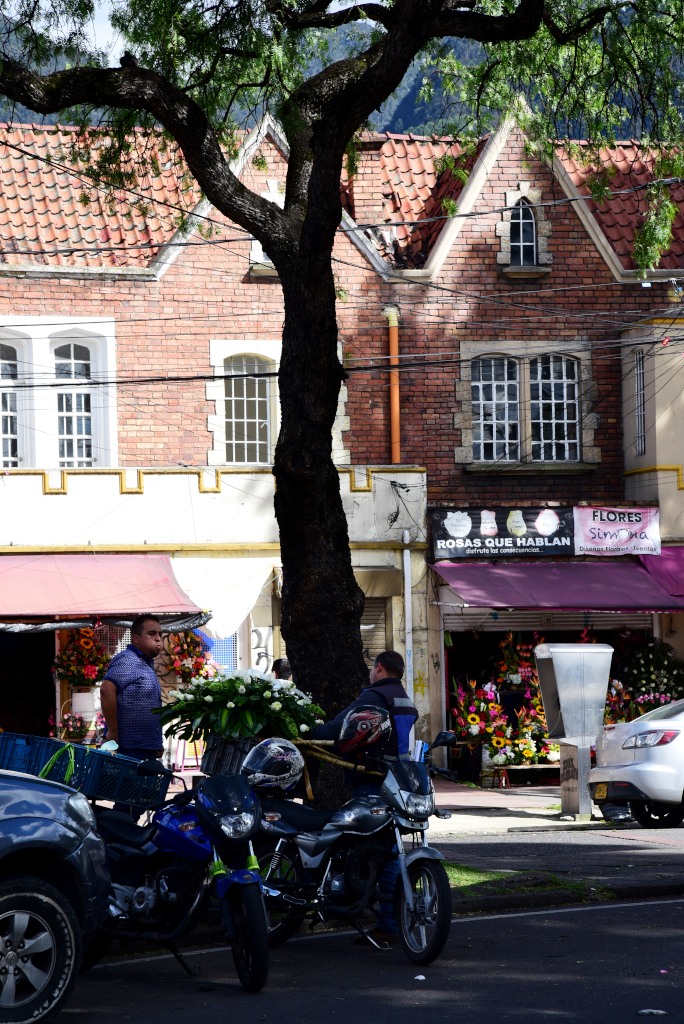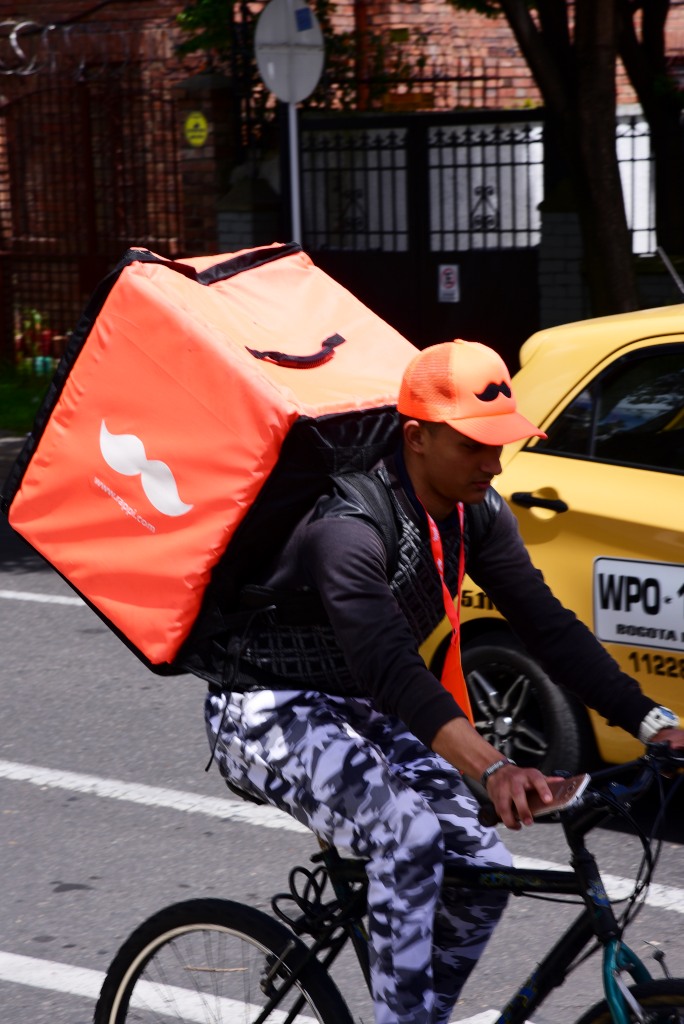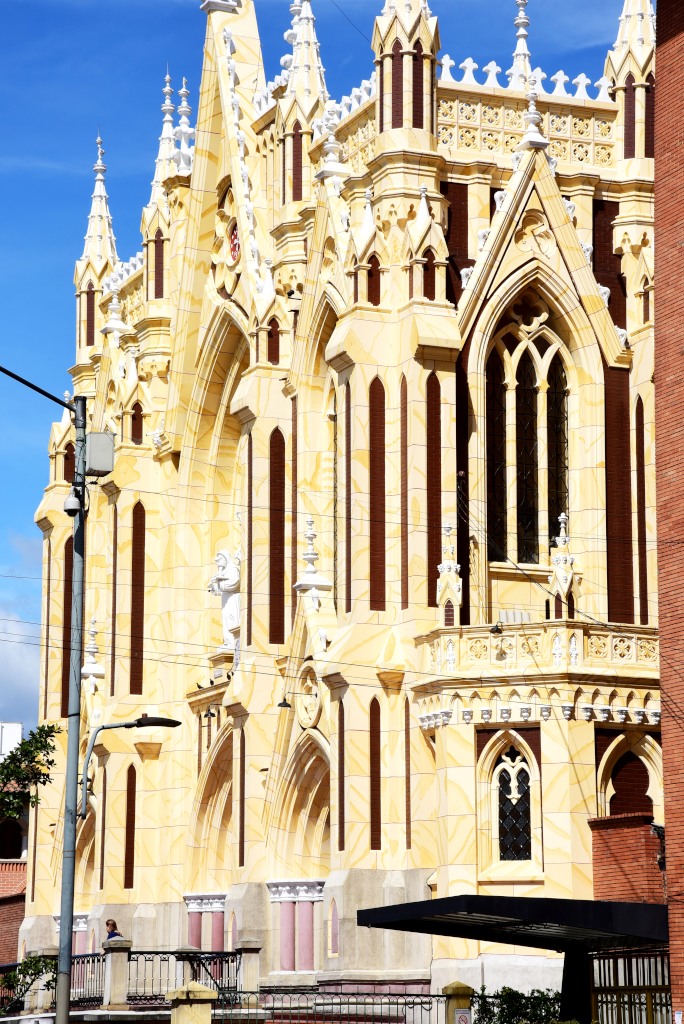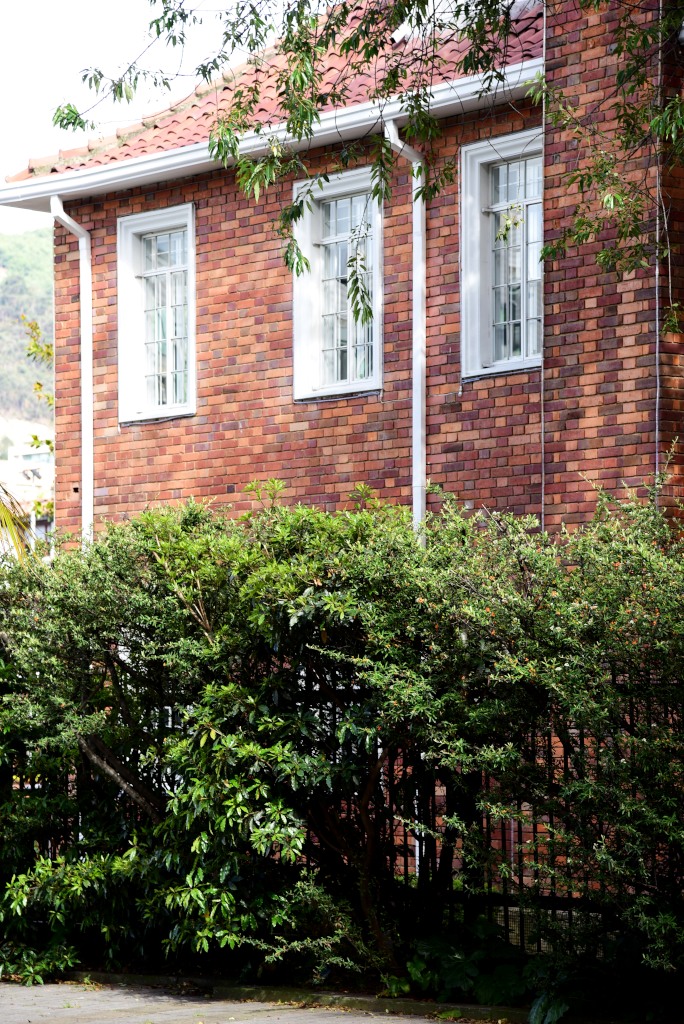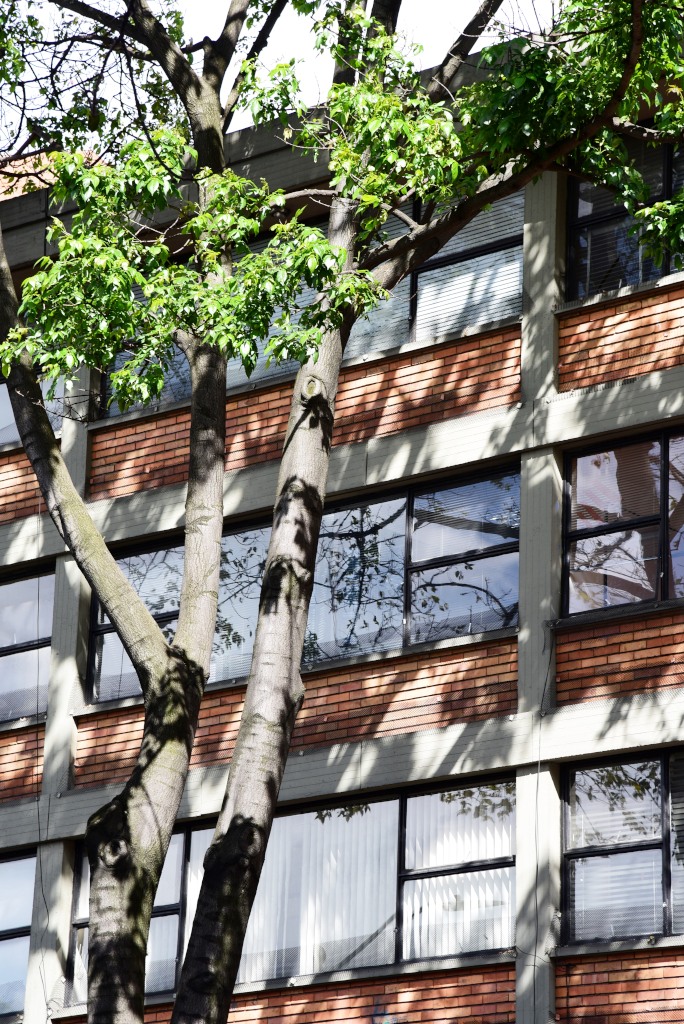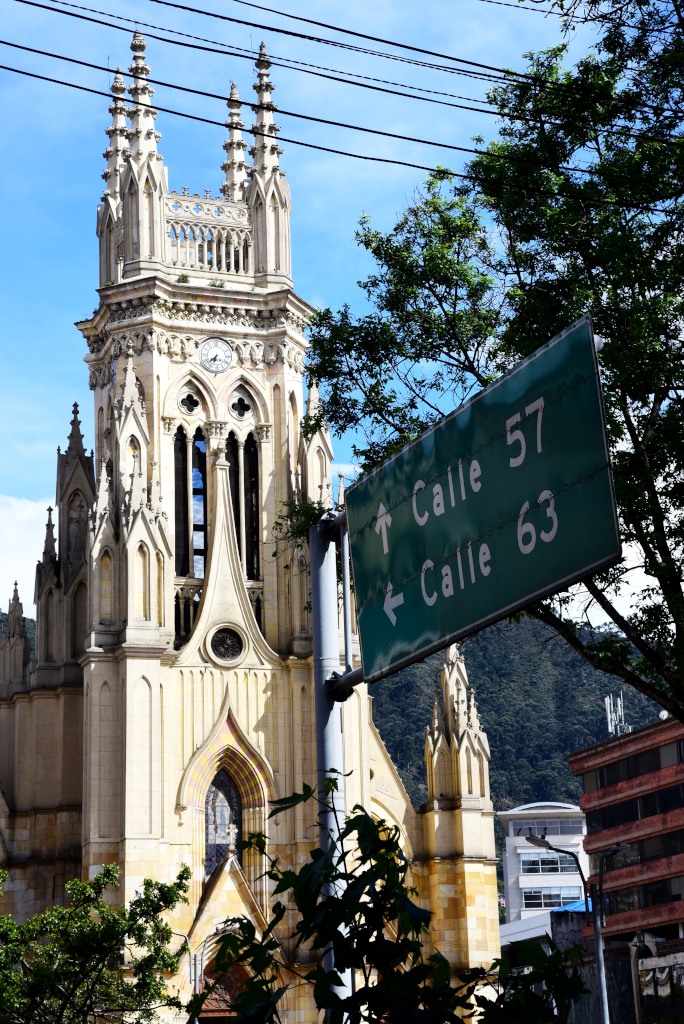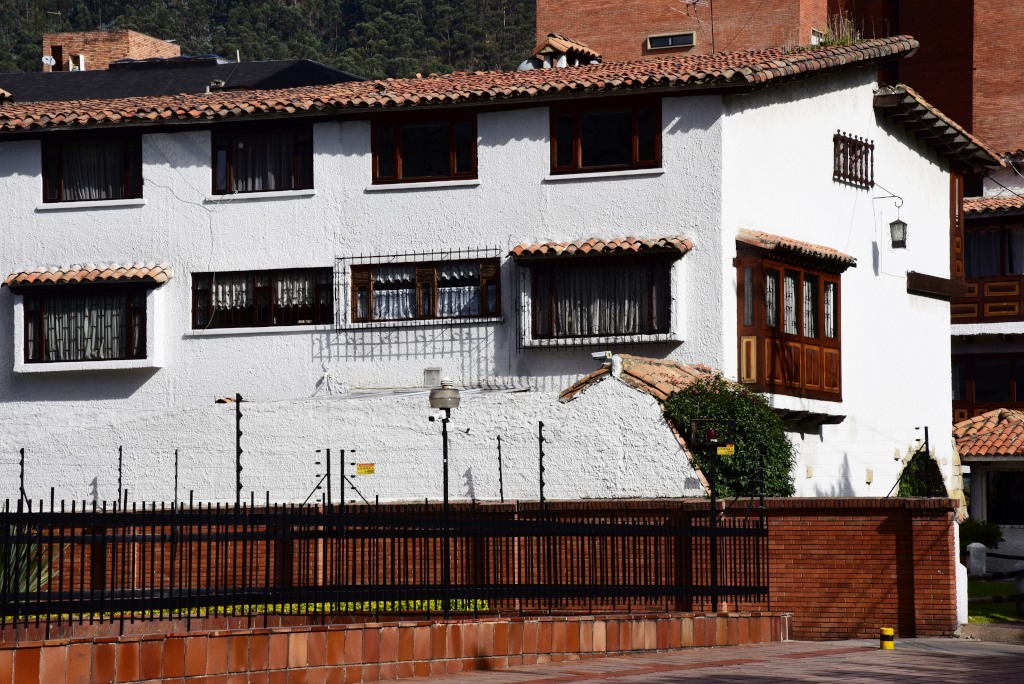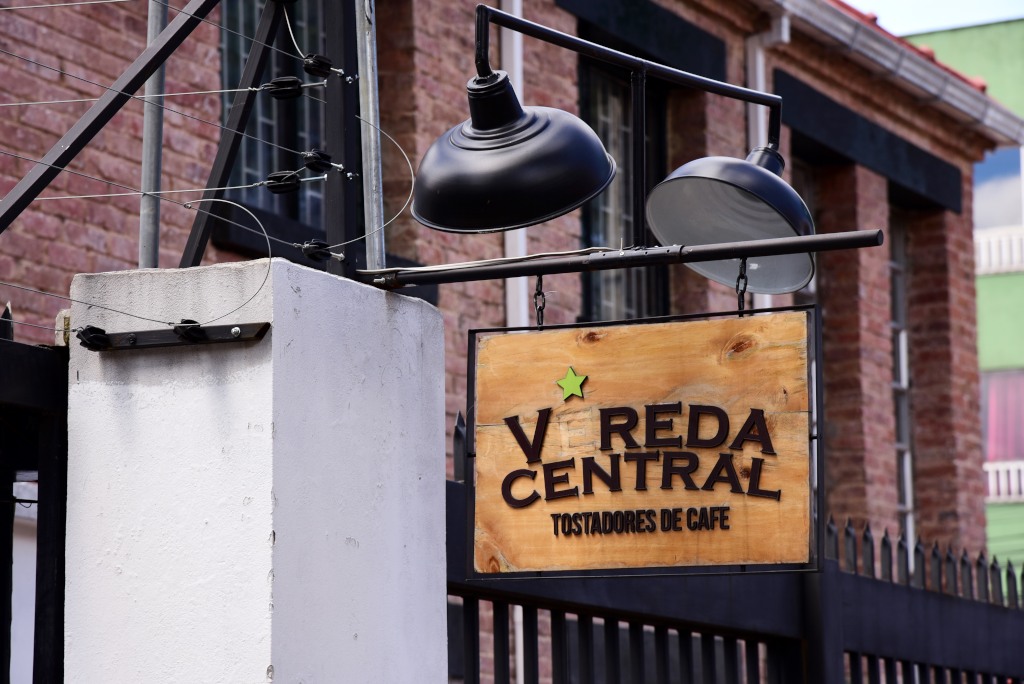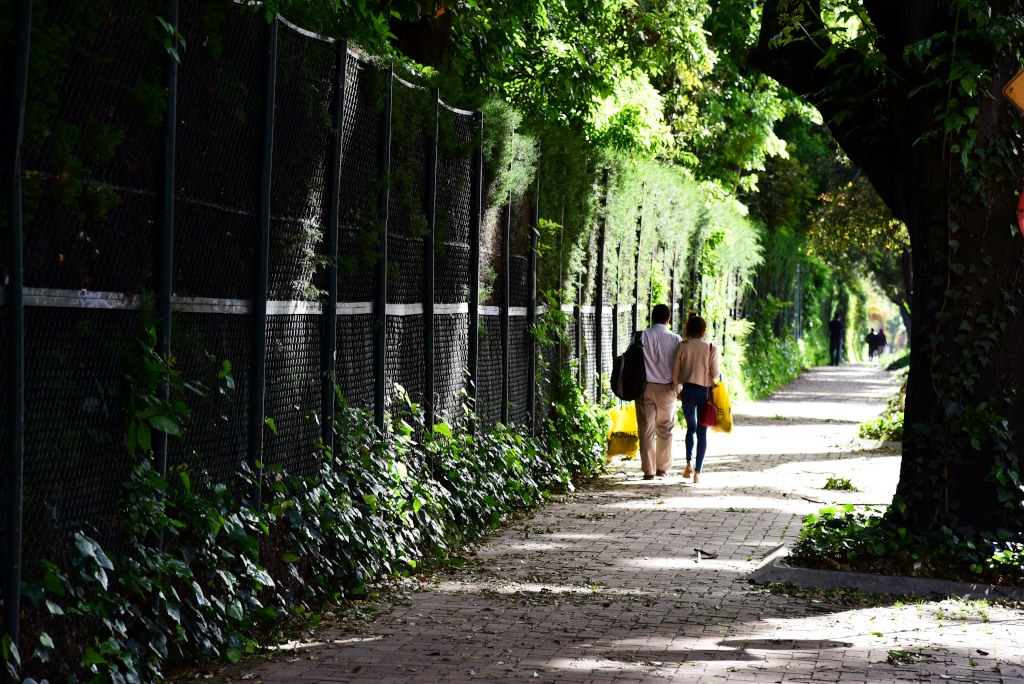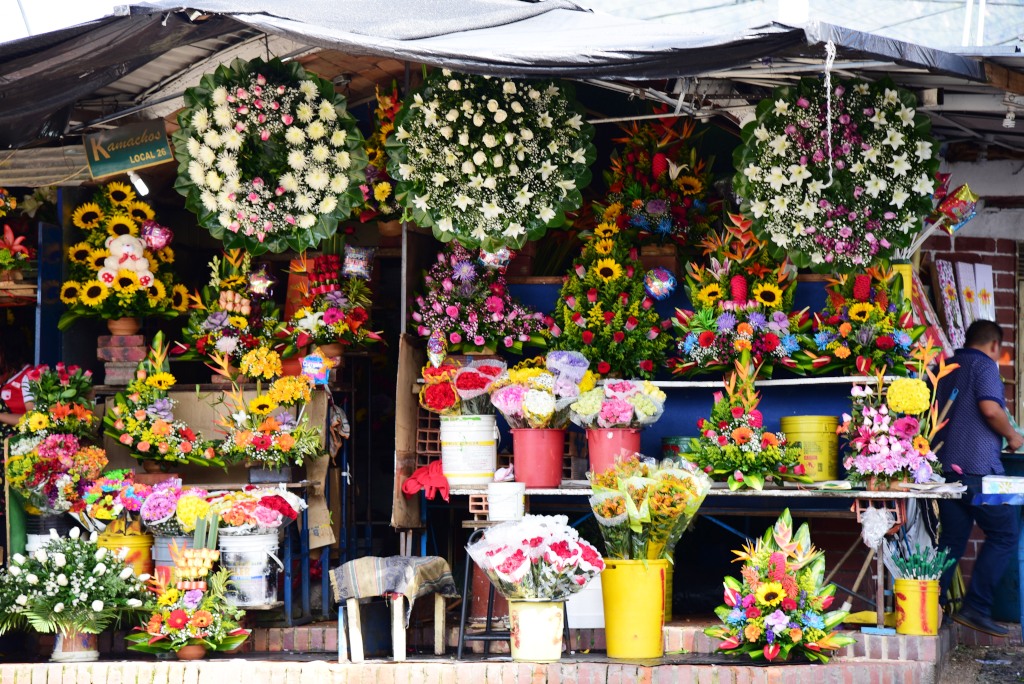January 20th, 2018
Assembling my things for the day, putting everything in its place, loading the battery and SD cards into the camera, ensuring that the daypack has the umbrella and travel guides, that I am wearing all the appropriate layers, and …where are my sunglasses?
A frantic search ensues, and it turns out that I don’t have them anymore. One day into the trip, and this is the first casualty. And they were expensive Oakleys, glasses I used quite a bit in sunny weather. Well, hardly that much back home, but nonetheless. So now I will have to go out in the … partially clouded Bogota day, which turns out to hardy require sunglasses, and in fact during the day I notice very few locals wearing sunglasses anyway.
My plan for the day is another major walk, involving going up to Chapinero, Chico and then if I still have it in me, as far as Usaquien. Yes, there are good transport options, but I want to see the city on foot to get the best sense of what the city has to offer, although in the end it may not have been such a worthwhile effort.
Not much further south on Carrera 19, exactly what I was looking for: not just a café, but a coffee roaster, with a sprawling terrace with high tables and whimsical artisanal touches. The coffee is somewhat expensive and in the end not that good, but probably better than any of the competition’s.
A conversation with the two men seated at the next table ensues, the only other customers on the spacious terrace. Naturally, I can’t help but want to join in, given how fascinating the conversation seems.
Larry is a stocky Australian with an off-hand Richard Branson handsomeness, slicked back grey hair with accompanying light beard, wearing an army jacket. He is serious but grins slyly at the right moments. His cohort Jason is local, an academic who studied in New York and teaches cultural studies and anthropology in a local university. Jason is currently researching the idea of the subject’s role in anthropological investigation – or was it the subjective? It’s hard to make out what he is saying with all the background noise, but I do find it all enthralling.
Larry becomes the focus of the conversation, having moved from his work as female nude photographer to a mixed media project involving the recording of decommissioned revolutionary fighters using their own voices, focusing on the recording of their images by their own means. There would be other components to the work involving video and written narrative, but the idea remains for the subjects to be depicted as much as possible in their own terms, and to minimize the intervention of the artist. It sounds very intriguing, although I am sure I may not be describing Larry’s project in entirely accurate terms.
Larry smokes a cheap local brand of non-filtered cigarettes incessantly, which I also find fascinating, since it is so rare that one sees anyone smoking that amount these days. And the cigarettes are actually quite good, apparently banned during Uribe’s presidency, as he wanted to quell anything of a left-wing nature.
Jason comments that in New York he never did anything to record his personal life, like blog for example. I look at him quizzically, as that would really be a function of desire and availability of time. And in his case, perhaps there was ample expression taking place in the course of his studies and research to preclude the desire for a more personal avenue of expression.
Prior to heading north, I will first explore some of the fitness centres to the south of here. The one on Calle 34 just off of Carrera 19 is more of a yoga studio with the requisite feel-good activities that bring in the cash. The area degrades considerably into drive-by shooting territory. The Mac gym offers not just one, but three whole floors of weights, with relatively prohibitive hours on the weekend, but on Monday the place closes at 10 pm. So Monday it will be!
Now onto the long trek north, and full of optimism. I weave westward through the genteel retro townhouses of La Soledad closer to Avenida Caracas, then cross over at the now familiar gigantic auto dealerships, and upon reaching Carrera 13, head north. In this upper area of Chapinero, the street presents well-tended environments, architectural design, clean lines, shining facades, institutions, car dealerships, medical authorities, schools, and people with a mission.
The Catholic University with its soaring structure, ribbed cladding and brilliant yellow fascia represents a stunning conclusion to the business environment to the south. To the north, the area becomes more residential, local, with almost exclusively smaller structures and businesses – and a lot poorer.
The streets are milling with ambulatory vendors, touts promoting storefronts, families out for a stroll, or people just hanging around. The number of arresting visuals diminish, but so also does the sense of comfort around pulling out an expensive camera and pointing in some odd direction.
At times I crouch inside passages to get a better shot – and to be more private – crouching over my bag, slipping the camera out of the felt bag, then quickly slipping it back in.
There are too many people at close quarters here to warrant carrying the bag with the camera in my hand. The other technique for staying safe on the street also applies, and that is to walk quickly – not hard for someone who looms over the populace – and also weave somewhat erratically, stopping occasionally and suddenly and turning around, just in case I am being followed.
The area does not get any better, and I am very disappointed. The trip to Chapinero had been intended to be a highlight of the day, and it’s pretty much anything but. I continue, block upon block, skirting the innumerable people parked with their wares on the narrow sidewalk, barkers, the dance music or pop spewing from their portable music players, and the slowly moving couples and families.
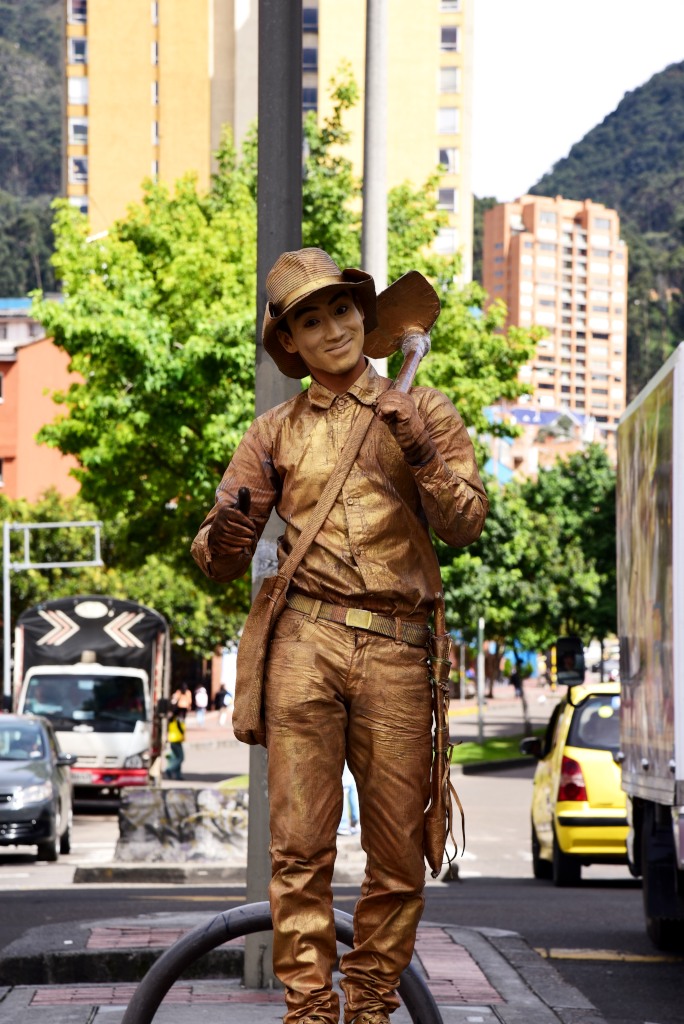
I am absolutely starving, but cannot bring myself to eat in any of the establishments I see. The high irony is that the Colombian chains are probably the best choice, for cleanliness, quality of menus, and presentation. American chains are also very much in evidence, such as Subway, KFC, and Dominoes, but I won’t even go there. Stripping grease and starch off the menus of local restaurants leaves virtually nothing behind. I would like to think that this is a typical Latin American problem, although Mexico is far ahead in this sense.
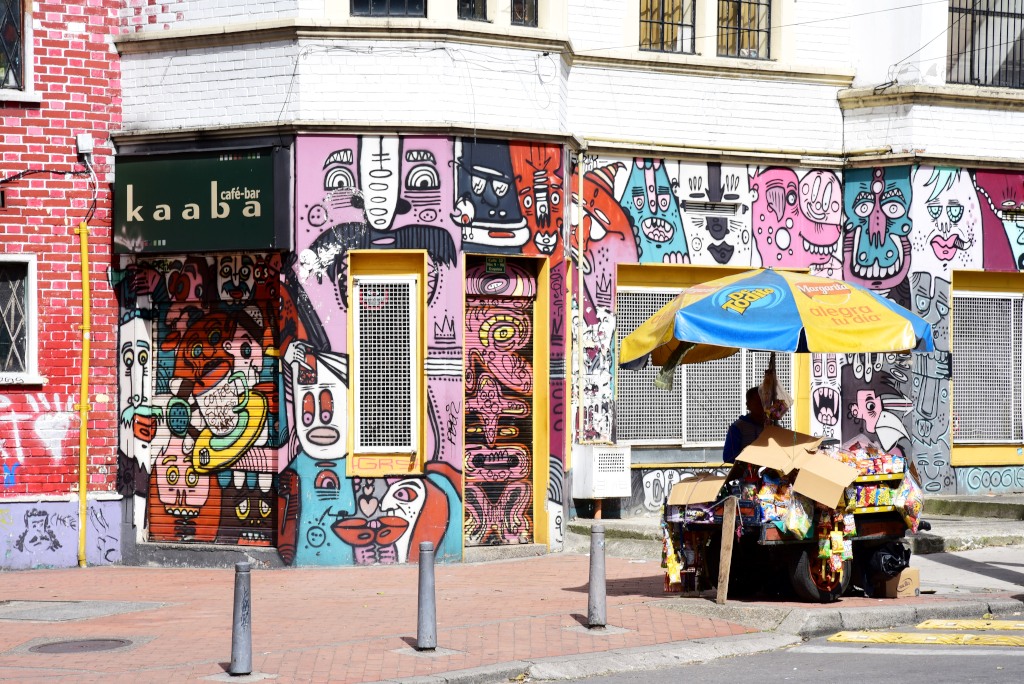
Beyond arepas, corn-flour pancakes stuffed with a variety of different ingredients, deep-fried chicken, and empanadas, the occasional restaurant offers the same old pork cutlets, beef cutlets, and a few other tired and unimaginative staples, the smell of grease in the often tiny, dilapidated and overcrowded establishments providing even less incentive.
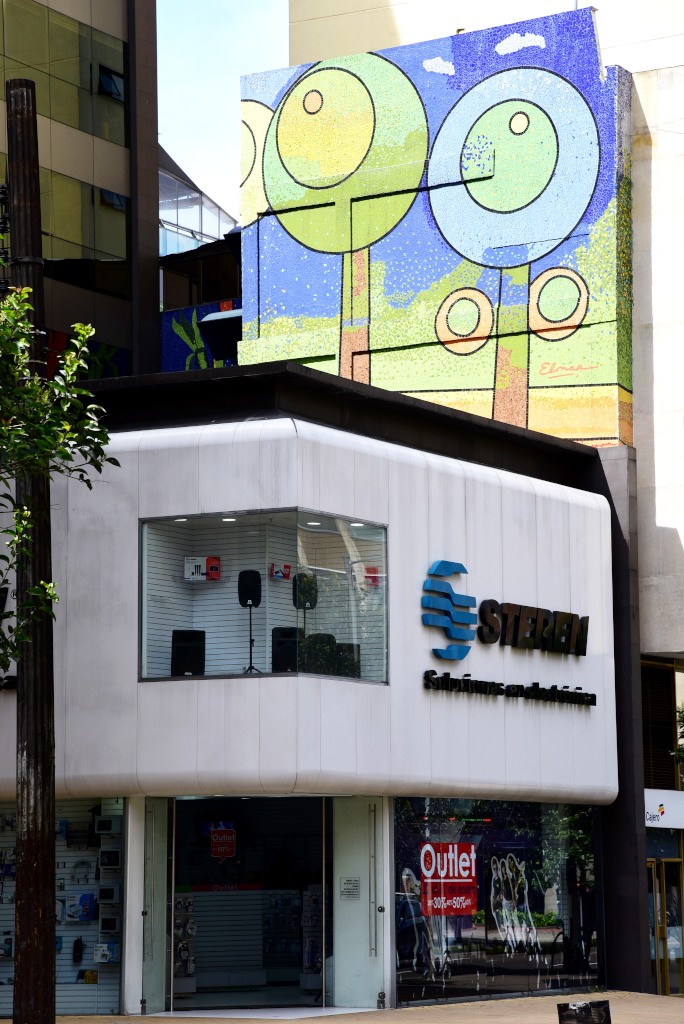
I was hopeful that Chico in all its affluence would provide astonishing choices, but while the restaurant spaces are far more spacious and luxurious, the menus are not much different. The height of expression would be a few Italian establishment, but despite my starved state, I am left stone cold.
It turns out that as boring as the food I may have bought in the grocery store may be, given what the restaurants serve, there is little point of spending relatively good money to eat out here. Except that I have booked hotels for the next six weeks, and as such will not have cooking facilities, and utterly reliant on the limited fare offered by local restaurants. I can only hope that small towns will have a better chance of healthier, home cooked fare.
Restaurants often feature touts reciting the same mantra while waving menus or handing out leaflets. Other types of businesses do the same, which only drives the pedestrian to completely ignore them. One consideration that comes to mind is the age-old distraction game, whereby one person acts as decoy, while the other person goes about pickpocketing you.
I feel very self-conscious pulling out the camera and taking photos. I think it may be because I was expecting Chapinero to be upscale, and it’s really not far removed from La Candelaria. I wouldn’t feel comfortable spending too much time on one spot, and the narrow sidewalks are very crowded with people often just milling around, without much apparent purpose.
I just stop taking photos, initially because I am not sure I will be able to generate enough photos for the Chico area. It matters to me because I want to create photo galleries by neighborhood.
And then suddenly, an enormous transformation occurs, the tawdry shops and bedraggled populace transforming into soaring and immaculate structures featuring innovative design. The finish on the buildings becomes sleek, visually engaging, perfectly executed, and assumes a much larger scale.
Structure upon structure unfolds before me, never mind the extensive manicured lawns, trimmed bushes, flowering plants, overshadowed by a canopy of large shady trees. This is Chico, where the rich people live and go out, a world very far removed from Chapinero to the south.
I am in awe of this new-found paradigm of elegance and money, although it is obviously all about surfaces. Expansive malls with perfectly-designed and organized shops, inviting restaurants of a much higher caliber, a proper segregated bike path, all immaculately tended and spacious.
But I want to eat somewhere, and am now utterly exhausted, having inspected menu upon menu and found nothing but the same old incredibly boring food, only for higher prices in more palatable environments.
By the time I reach the northern terminus of Chico at Calle 90, I find a sleek modern hotel with a number of restaurants, but have now pretty much lost my patience. The restaurants that comprise the hotel property are very fancy, laid out with copious amount of glamour, exactly what one would expect from a fashionable modern hotel in an upscale neighborhood in a western resort.
Except that most of Bogota is deplorably poor, and more to the point, I have lost any faith in the possibility of any eating place being that redeeming.
No menus are posted anywhere, and I just couldn’t be bothered asking. The idea of paying a high price for Italian food leaves me indifferent, and in any case, there must be more choices in this relatively affluent neighborhood. But the side of Chico wrapping back southward along Carrera 14 is far more modest in its aspirations, with much smaller shops and restaurants, and the same old empanadas, meats a la parilla, pollo asado, arepas, panaderias, just boring and greasy food.
There are decent coffee shops, but I just can’t live off of coffee, a particular irony, given that I am for once backing off on my coffee habit. I should have stopped at the relatively appealing pizzeria set next to the long green meridian en route, but lamentably I did not.
And things only get worse, the quality of ambience going downhill, rejoining the sensibility that I saw earlier in Chapinero. I am hungrier, weaker, more tired, and just can’t find anywhere to eat. The environment becomes sketchier, with more chaotic traffic, people lounging around the sidewalks with dubious intentions, ambulatory vendors, touts, homeless people, and dilapidated, crumbling facades.
There is an area further up in Chico I pass through with streets lined with bars and some sex shops, and it looks very much like the kind of environment I would never want to find myself in, and certainly not now – not that there are any restaurants.
The environment does not feel unsafe, at least while the sun is still shining brightly. There are a few dodgy-looking people, but most of the stretch from around 70th heading south has groupings of businesses that are typically of a cohesive nature, such as hair salons, metalwork shops, recycling depots, and even a few sex shops. As with much of the rest of the city, the establishments are small and very modest.
Deeper into the war zone, I simply give up, and stop off in a corner store stacked to the ceiling with bread products. They have tamales, which should be a saving grace – and it really is, the one thing I would want to ingest here.
At this latitude, the city has degraded to claustrophobic and run-down industrial workshops, the workers in the shops contrasting against the impoverished denizens on the street. Freakish prostitutes clamber by the bakery, while wizened locals sit hunched over their sodas, watching their triste lives unravel before their eyes.
I had been advised consistently to stay off Carrera 14/Avenida Caracas, although no reasons were given. I could understand if it were just due to the heavy bus traffic, although it peters out in the late afternoon. The boulevard is quite wide, and even the sidewalks, despite being quite broken and disheveled, are quite wide. Businesses are organized in clusters, hair dressers, pet shops, pet furniture shops, tattoo shops, produce shops, giving Caracas a pleasant sense of cohesion, and making it at least somewhat enjoyable to traverse, not that there seems to be much competition in the city.
Several blocks before the Calle 39, I turn right, westward and away from the downtown, and already the area noticeably improves, more so as I approach Carrera 19 where my AirBnB is located. Of all the city I have traversed, this really has proven to be such a perfect location, it just seems difficult to believe. Of course, my exposure to the rest of the city is hardly exhaustive …
Certainly, Chico is far more upscale, but then it is also far too far removed from the downtown area, and one would also have to ask why one would be staying in Bogota to begin with.
I am so glad to get back to the AirBnB residence. I have no idea as to why I am so utterly exhausted, although overall, the severe cramping sensation from the flight is gone. Is this a reflection of my poor physical fitness, or the fact that I really went on incredibly long walk? Or the high altitude? I am finishing the altitude-sickness medication today, but all the same … Or perhaps I have slight sun stroke. The skin on my face feels slightly raw, and reddish. Gee, and we are located on the equator, after all…

